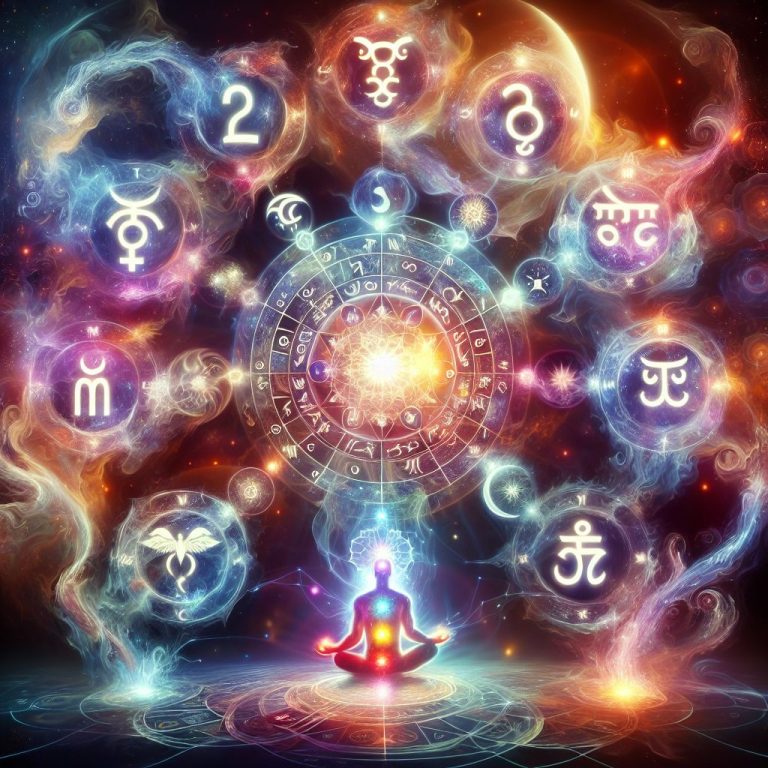Unlock Deep Healing: The Chakra-Reiki Method Backed by Chinese Medicine

Key Takeaways
- Chakra-reiki is a fusion word meaning energy healing that combines ancient practices like Chakras, Reiki, and Chinese Medicine to promote holistic wellness.
- Reiki, originating from Japan, channels universal life energy to facilitate healing and stress reduction.
- Chakra balancing focuses on aligning the body’s seven energy centers for improved physical and mental health.
- Traditional Chinese Medicine (TCM) uses techniques like acupuncture and herbal remedies to restore energy balance.
- Modern wellness centers increasingly integrate these practices, offering comprehensive approaches to health.
The Evolution of Energy Healing Practices
Energy healing has been around for centuries, rooted in ancient traditions and cultures. Today, it’s experiencing a renaissance, blending the wisdom of the past with modern understanding. This trend has created a powerful new approach to health that many people are embracing for its holistic benefits. The blending of Chakras, Reiki, and Chinese Medicine forms a comprehensive system that addresses the body, mind, and spirit.
Renewed Interest in Holistic Health
In recent years, there’s been a significant shift towards holistic health. People are seeking ways to enhance their well-being beyond conventional medicine. This interest stems from a desire to treat the whole person rather than just the symptoms of an illness. By integrating practices like Reiki and chakra balancing, individuals can experience a more profound sense of healing and balance.
Moreover, the rise of stress-related ailments in our fast-paced world has led many to explore energy healing as a means to achieve relaxation and emotional stability. These practices offer a refuge from daily pressures, helping individuals reconnect with their inner selves and the natural world.
The Science Supporting Energy Healing
While energy healing has spiritual roots, scientific studies are beginning to validate its benefits. Research shows that practices like Reiki can reduce stress, enhance relaxation, and promote a sense of well-being. For example, a study published in the “Journal of Evidence-Based Complementary & Alternative Medicine” found that Reiki significantly reduced anxiety and pain in patients undergoing cancer treatment.
Additionally, the concept of energy fields is gaining traction in scientific circles. The idea that the body has an energy field that can be influenced to promote healing aligns with principles found in quantum physics. This growing body of evidence is helping to bridge the gap between ancient wisdom and modern science.
Most importantly, energy healing provides a complementary approach to traditional medical treatments. It doesn’t replace conventional medicine but enhances it by addressing the emotional and spiritual aspects of health, which are often overlooked.
Integration in Modern Wellness Centers
Today’s wellness centers are increasingly incorporating energy healing practices into their offerings. This integration reflects the growing demand for holistic health solutions that address the mind, body, and spirit. Many spas and wellness centers now provide services like Reiki sessions, chakra balancing, and acupuncture alongside traditional therapies.
“At our wellness center, we’ve seen a marked increase in clients seeking Reiki and chakra balancing sessions. These practices complement our other services, providing a well-rounded approach to health and well-being.” – Wellness Center Director
By offering a variety of healing modalities, wellness centers can cater to diverse needs and preferences. This approach ensures that individuals receive personalized care tailored to their unique energy patterns and health goals. As more people discover the benefits of blended energy healing, its presence in the wellness industry is likely to continue growing.
Traditional Roots of Holistic Practices
The practices of Chakras, Reiki, and Traditional Chinese Medicine (TCM) each have rich histories that contribute to their effectiveness in energy healing. Understanding these roots can deepen our appreciation for how they work together to promote holistic health.
“Energy healing is not just about treating symptoms; it’s about restoring balance and harmony within the body and mind.” – Energy Healing Practitioner
Let’s explore the origins and principles of each practice to see how they form the foundation of modern energy healing.
Understanding Chakras and Their Origins
Chakras are energy centers within the body, originating from ancient Indian spiritual traditions. There are seven main chakras, each corresponding to different physical, emotional, and spiritual aspects. When these energy centers are balanced, the body functions optimally, and one experiences a sense of well-being.
Balancing chakras involves practices like meditation, yoga, and specific breathing techniques. By focusing on these energy centers, individuals can release blockages and promote the free flow of energy throughout the body.
Basics of Reiki and Its Japanese Heritage
Reiki is a Japanese healing technique developed in the early 20th century by Mikao Usui. It involves channeling universal life energy through the practitioner’s hands to the recipient, promoting healing and relaxation. Reiki sessions can be conducted in person or remotely, as the energy is not bound by physical distance. To understand more about how energy centers work, you can read this complete guide to your energy centers.
Practitioners often describe Reiki as a warm, tingling sensation that flows through the body, helping to release tension and stress. It’s a gentle yet powerful method for achieving balance and harmony. To explore more about this energy healing practice, visit Next Level Soul.
Principles of Traditional Chinese Medicine (TCM)
Traditional Chinese Medicine is a holistic system of health care that has been practiced for thousands of years. It includes various techniques like acupuncture, herbal medicine, and tai chi, all aimed at restoring the body’s natural balance. TCM is based on the concept of “Qi” (pronounced “chee”), the vital life force that flows through the body.
Acupuncture, one of the most well-known TCM practices, involves inserting thin needles into specific points on the body to unblock energy pathways. This process helps to restore the flow of Qi, promoting healing and relieving pain.
By blending these ancient practices, energy healing offers a comprehensive approach to wellness that resonates with many people today. The combination of Chakras, Reiki, and TCM provides a powerful toolkit for achieving holistic health.
Blending Ancient Techniques for Modern Benefits
Blending Chakras, Reiki, and Traditional Chinese Medicine (TCM) offers a modern approach to health that is deeply rooted in ancient wisdom. This combination creates a synergistic effect, where the strengths of each practice enhance the others, providing comprehensive healing that addresses physical, emotional, and spiritual needs. The integrated approach acknowledges that health is multifaceted, requiring a balance of body, mind, and spirit.
How Chakras, Reiki, and TCM Complement Each Other
Each of these practices focuses on energy, yet they approach it from different angles. Chakras provide a framework for understanding the body’s energy centers, while Reiki offers a method for channeling universal energy to those centers. TCM, with its focus on Qi, offers techniques to ensure that energy flows freely through the body’s meridians.
For example, someone experiencing stress might benefit from a session that begins with Reiki to relax the mind and body, followed by acupuncture to unblock energy pathways, and ends with chakra meditation to align the energy centers. This combination can lead to profound relaxation and healing.
Real-World Applications and Testimonials
Many individuals have found relief through these blended practices. Consider the story of Sarah, a busy professional who struggled with chronic stress and fatigue. She began attending a wellness center that offered combined Reiki and TCM treatments. Over several weeks, Sarah noticed a significant improvement in her energy levels and stress management. She described feeling more balanced and at peace, attributing her transformation to the holistic approach of her treatments.
“I never realized how much stress was affecting my life until I experienced the calming effects of Reiki and acupuncture. It’s like a weight has been lifted.” – Sarah, Energy Healing Client
Benefits of an Integrated Approach
- Enhanced relaxation and stress relief through multiple modalities.
- Improved energy flow and balance across the body’s systems.
- Personalized treatment plans that address individual needs.
- Holistic care that considers physical, emotional, and spiritual health.
- Increased overall well-being and quality of life.
By combining these practices, individuals can experience a more comprehensive form of healing. Each session can be tailored to address specific issues, making it a flexible and adaptable approach to health. For more insights on how energy centers play a role in this, explore this complete guide to your energy centers.
Most importantly, the integrated approach encourages individuals to take an active role in their healing journey. By participating in practices like meditation and mindful breathing, clients become more attuned to their bodies and energy, fostering long-term wellness.
The Impact on Wellness Industry
The integration of Chakras, Reiki, and TCM into wellness centers has transformed the industry, meeting the growing demand for holistic health solutions. As more people seek alternatives to conventional medicine, these practices offer a complementary path that is both effective and accessible.
Growing Demand for Blended Healing Practices
The popularity of energy healing continues to rise, with more individuals seeking out these practices for their numerous benefits. This demand is driven by an increased awareness of the mind-body connection and a desire for treatments that go beyond symptom management. Clients are looking for ways to enhance their overall well-being, not just treat specific ailments.
Furthermore, the accessibility of information through the internet has made it easier for people to learn about and access these healing modalities. As testimonials and success stories spread, more people are inspired to explore energy healing for themselves.
New Offerings in Spas and Wellness Centers
In response to this demand, spas and wellness centers are expanding their offerings to include energy healing services. These establishments are creating dedicated spaces for Reiki, chakra balancing, and TCM treatments, often incorporating them into existing wellness programs.
This expansion allows clients to experience a range of therapies in one location, enhancing convenience and accessibility. Wellness centers are also training staff in these modalities, ensuring that clients receive expert care from knowledgeable practitioners.
Potential Challenges and Misunderstandings
Despite the growing popularity, there are still challenges and misconceptions surrounding energy healing. Some people may be skeptical of its efficacy, viewing it as unscientific or lacking evidence. Others may misunderstand the practices, expecting immediate results without recognizing the need for ongoing sessions. For a deeper understanding of these practices, you can explore what chakras are and how they relate to energy healing.
To overcome these challenges, education is key. Practitioners and wellness centers must provide clear information about what clients can expect and how these practices work. By fostering understanding and transparency, the energy healing community can continue to grow and thrive.
Additionally, it’s important for practitioners to work collaboratively with conventional medical professionals, ensuring that clients receive well-rounded care that respects both traditional and modern approaches.
The Future of Blended Energy Healing
The future of energy healing looks promising, with continued advancements in both understanding and application. As more research supports the benefits of these practices, their integration into mainstream health care is likely to increase. This trend will provide more people with access to holistic healing options, empowering them to take charge of their health and well-being.
Technological Integration in Holistic Practices
The future of energy healing is bright, especially with the integration of technology. Virtual reality (VR) and mobile applications are being developed to enhance meditation and visualization techniques, making practices like chakra balancing more accessible to a wider audience. For instance, VR can simulate serene environments that aid in relaxation and energy alignment.
Moreover, wearable devices that track biofeedback, such as heart rate and stress levels, can provide real-time data to both practitioners and clients. This information helps tailor energy healing sessions to individual needs, ensuring more effective outcomes. Technology not only broadens the reach of these practices but also deepens the understanding of their impact.
Scientific Research and Validation
As energy healing gains popularity, scientific research is beginning to catch up, providing validation for its benefits. Studies have shown that practices like Reiki can significantly reduce stress and anxiety levels. For example, a study in the “Journal of Alternative and Complementary Medicine” demonstrated that Reiki sessions lowered stress markers in participants.
Furthermore, research into the physiological effects of acupuncture, a key component of Traditional Chinese Medicine, has revealed its ability to stimulate the body’s natural painkillers and promote healing. These findings are crucial for integrating energy healing into mainstream health care, as they provide empirical evidence of its efficacy.
Opportunities for Personal and Professional Growth
Engaging in energy healing practices offers numerous opportunities for personal and professional growth. On a personal level, individuals can experience profound changes in their health and well-being. By regularly participating in these practices, people often report increased self-awareness, emotional resilience, and a deeper connection to their inner selves.
Professionally, there is a growing demand for trained energy healing practitioners. As more wellness centers and medical facilities incorporate these modalities, the need for skilled professionals who can deliver these services effectively increases. This demand presents opportunities for those interested in pursuing a career in holistic health.
Frequently Asked Questions
As interest in energy healing grows, many people have questions about how these practices work and what they can expect. Here are some of the most common inquiries:
What are the core benefits of combining Chakras, Reiki, and Chinese Medicine?
Combining these practices provides a comprehensive approach to health by addressing physical, emotional, and spiritual aspects. This integration enhances relaxation, balances energy, and promotes overall well-being. By working together, these modalities offer a holistic healing experience that is greater than the sum of its parts.
How soon can one notice the effects of blended energy healing?
The effects of energy healing can vary depending on the individual and the specific issues being addressed. Some people experience immediate relief and relaxation, while others may notice gradual improvements over several sessions. Consistency and openness to the process often lead to the best results. For a deeper understanding of how energy centers influence this process, explore what are chakras.
What should beginners know before trying these practices?
Beginners should approach energy healing with an open mind and a willingness to explore. It’s essential to choose a qualified practitioner who can guide the process and tailor sessions to individual needs. Understanding that energy healing is a journey, not a quick fix, will help set realistic expectations.
How do these practices fit into conventional medical treatments?
Energy healing is best used as a complementary approach to conventional medical treatments. It can enhance the effectiveness of traditional therapies by addressing the emotional and spiritual aspects of health. Many practitioners work alongside medical professionals to provide holistic care that supports overall well-being.
For instance, a person undergoing chemotherapy might use Reiki to alleviate stress and improve energy levels, thereby enhancing their body’s ability to heal.
Integrating energy healing with conventional medicine requires open communication and collaboration between practitioners and medical professionals. This partnership ensures that clients receive comprehensive care that addresses all facets of their health.
Is professional guidance necessary for effective energy healing?
While some practices, like meditation and basic chakra balancing, can be done independently, professional guidance is often recommended for more complex modalities like Reiki and acupuncture. A trained practitioner can provide personalized care, ensuring that sessions are safe and effective.
Professional guidance also offers the benefit of experience and expertise. Practitioners can help clients understand their energy patterns and tailor treatments to address specific needs. This personalized approach enhances the overall effectiveness of energy healing.


